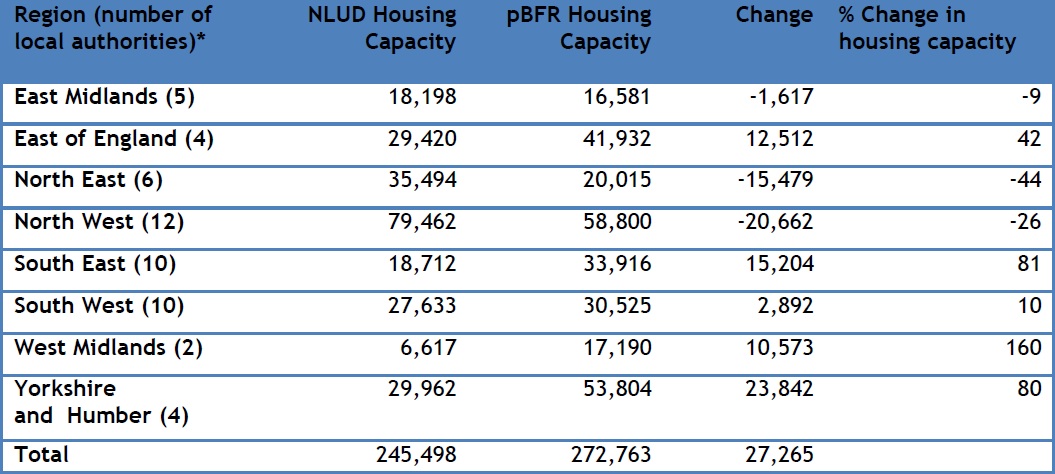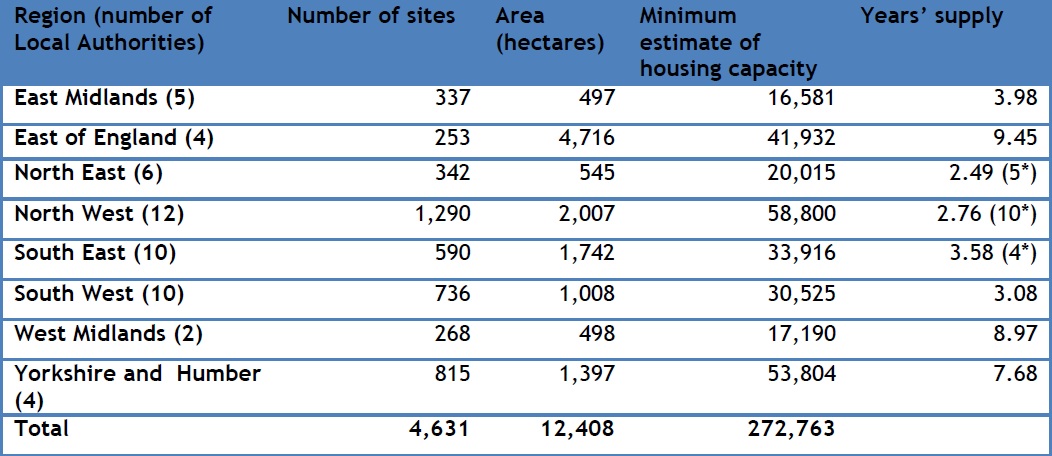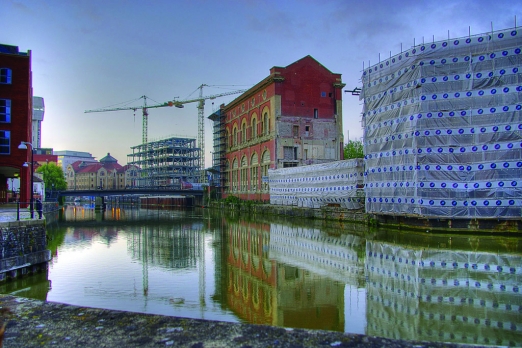New figures show big increase in brownfield sites available for housing
New research published today by the Campaign to Protect Rural England (CPRE) shows that suitable brownfield sites across England can provide at least 1.1 million new homes [1].
The Government had described a previous CPRE estimate of around 1 million homes as ‘wildly over optimistic’ [2]. Now, using the Government’s own pilot brownfield register scheme, CPRE has calculated that suitable brownfield sites can provide between 1.1 and 1.4 million new homes [3].
CPRE studied the findings of 53 councils that have published their data on suitable sites, and found that these areas alone could provide 273,000 homes [4]. Comparing this new data with the last available data from 2010-2012, CPRE noted an 11% increase in the number of homes that could be provided on suitable sites, with planning permissions for such sites increasing by 21% and the number of suitable sites being identified by 50% [5].
Applying the same 11% increase to the 2010-2012 figures for the whole country gives a new estimated minimum capacity of 1.1 million homes on suitable brownfield sites.
It is also worth noting that the study of the 53 pilot registers produced a figure – 273,000 – that is both higher than previous Government estimates of countrywide brownfield housing capacity, and almost enough for the participating councils to meet their five-year housing targets without releasing any countryside for development [6].
Shaun Spiers, chief executive of the Campaign to Protect Rural England (CPRE), said:
“We need to build good, affordable homes quickly in the right places. No one is suggesting that we will be able to provide all the homes we need without ever building on a greenfield site. But the Government needs to do much more to reconcile its commitment both to build a million homes and to protect the countryside, including the Green Belt it recently described as ‘sacrosanct’.
“These official figures show that there is plenty of suitable brownfield land available, and that the supply of brownfield land continues to grow. The Government and local authorities must now ensure that developers use it. This will not only save countryside, it will help ensure thriving towns and cities.”
The Government created the brownfield registers pilot last year in order to secure a consistent set of data on brownfield sites suitable for development [7]. The registers enable the Government to monitor its commitment that 90% of all brownfield sites have planning permission by 2020, and deliver 200,000 new homes on those sites [8]. CPRE’s research suggests that this ambition for new homes should be much higher.
CPRE is calling for national policies that ensure brownfield development is prioritised over greenfield development and support the provision of new homes on suitable brownfield sites. These include brownfield registers across the country, and an instruction for councils to refuse permission for greenfield sites where they would compete with the development of nearby brownfield land. Recent CPRE research showed that on average brownfield sites are developed half a year faster than greenfield while previous research demonstrated that brownfield is a renewable resource [9].
ENDS
Pilot registers: regional breakdowns
A comparison between brownfield capacity identified in most recent National Land Use Database (NLUD) entries, and capacity identified in pilot brownfield registers (pBFR):

*Excluding London: In January 2016, the London Land Commission published London’s first brownfield register of publicly owned sites. This identified 40,000 sites for 130,000 homes in the capital.
Pilot registers: ability to meet five-year housing supply targets through brownfield development

*Up-to-date local authority housing requirements are not available for all 53 local authorities. This is the case in the North East, North West and South East of England. The number in brackets in the ‘Years supply’ column denotes the number of local authorities for which housing supply figures were available.
Notes to editors
[1] CPRE, Housing capacity on suitable brownfield land, October 2016.
[2] In November 2014 CPRE published its From wasted space to living spaces report, which found that at least 1 million homes could be provided on suitable brownfield land in England. The Department for Communities and Local Government described this estimate as ‘wildly over optimistic’ in its Housing & Planning Bill Impact Assessment of October 2015 (page 70). The document claimed that ‘only a fraction will be suitable for housing’, which appeared to disregard the fact that the estimate was based only on sites councils considered ‘suitable for housing’.
The new number of at least 1.1 million is based on data that the Government has itself commissioned.
[3] National estimates based on the results from the 53 councils vary according to the methodologies, which are shown and explained in the Housing capacity on suitable brownfield land paper.
The more conservative estimates, which involve extrapolating the most recent National Land Use Database (NLUD) data, see figures of around 1.1 million, which would be achieved through applying an 11% increase found across the 53 registers to the general findings of the 2010-2012 NLUD figures that supported the 2014 From wasted space report.
A second methodology extrapolated the figures from the pilot register based on their rural/urban classification. Adding the London Land Commission’s estimate of a minimum of 130,000 homes across London, this method provided a minimum estimate of 1.4 million homes. Our research also finds that the selection of particular local authorities to participate in the pilot has not had a significant impact on the national estimates.
[4] The pilots were undertaken by 73 councils. Fifty-three of the 73 councils had published results by August 2016.
[5] Councils last submitted their records of available brownfield land to the Government’s National Land Use Database (NLUD) between 2010 and 2012.
[6] Based on the most current local plan documents for each council, the amount of land available for housing development identified through the pilot brownfield registers is 4.89 years’ supply across the 45 local authorities that have draft or adopted housing land supply figures. Eighteen of these local authorities have a brownfield land supply that exceeds the five-year housing land supply requirement set by the Government.
[7] DCLG, First areas to push for faster brownfield land development, 10 March 2016.
[8] DCLG, Funding boost will provide 200,000 homes on brownfield land, 28 January 2015.
[9] CPRE, Brownfield comes first, March 2016; CPRE, From wasted space, 2014.
For more information please contact Benjamin Halfpenny on 020 7981 2819 / This email address is being protected from spambots. You need JavaScript enabled to view it.
The Campaign to Protect Rural England (CPRE) fights for a better future for the English countryside. We work locally and nationally to protect, shape and enhance a beautiful, thriving countryside for everyone to value and enjoy. Our members are united in their love for England’s landscapes and rural communities, and stand up for the countryside, so it can continue to sustain, enchant and inspire future generations. Founded in 1926, President: Emma Bridgewater, Patron: Her Majesty The Queen. www.cpre.org.uk.



